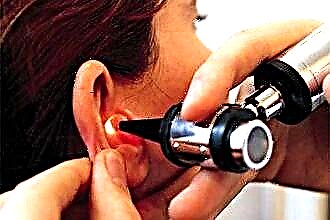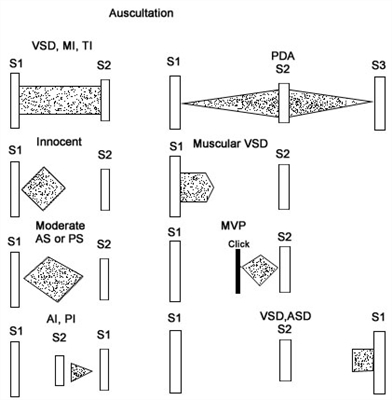Rinsing the nasal cavities helps to avoid nasal congestion and mucus buildup. But why is it especially important for pregnant women that the nasal passages remain always free?
 Breathing through the nose is the main type of respiratory activity that is normally inherent in all healthy people. With obstruction of the nasal passages, breathing is difficult, and therefore less oxygen enters the blood than usual. This is not good for an ordinary person, and in a pregnant woman, such a situation can directly lead to chronic fetal hypoxia. This is the name of the constant lack of oxygen reaching the fetus through the umbilical cord along with the mother's blood. In the acute phase, this violation can lead to miscarriage, and in the chronic course, it can cause delay and disruption of the intrauterine development of the child.
Breathing through the nose is the main type of respiratory activity that is normally inherent in all healthy people. With obstruction of the nasal passages, breathing is difficult, and therefore less oxygen enters the blood than usual. This is not good for an ordinary person, and in a pregnant woman, such a situation can directly lead to chronic fetal hypoxia. This is the name of the constant lack of oxygen reaching the fetus through the umbilical cord along with the mother's blood. In the acute phase, this violation can lead to miscarriage, and in the chronic course, it can cause delay and disruption of the intrauterine development of the child.
Rinsing your nose during pregnancy is a great way to avoid this situation. In addition, it will help you prevent infections from occurring, which can also pose a threat to the fetus.
Causes of congestion during pregnancy
Vasomotor rhinitis
This type of edema of the nasal mucosa is primarily due to the most serious hormonal changes in the female body that occur during pregnancy. Such a symptom is not dangerous, does not require special pharmacological treatment, and is regarded by some doctors as a variant of the norm. It develops mainly in the second trimester of pregnancy. Rinsing the nasal passages with normal saline or herbal infusions can be a great way to get rid of this problem.
Allergic rhinitis
 The immune system during pregnancy is in any case under a rather serious load. And if a woman additionally had some kind of explicit or latent allergy, then the chances that it will worsen or manifest itself during this period are maximum. Spring and summer are especially dangerous in this respect, when the air is filled with pollen from plants.
The immune system during pregnancy is in any case under a rather serious load. And if a woman additionally had some kind of explicit or latent allergy, then the chances that it will worsen or manifest itself during this period are maximum. Spring and summer are especially dangerous in this respect, when the air is filled with pollen from plants.
Allergic rhinitis is manifested by the formation of copious watery mucus, which is removed from the nose on its own. Consequently, washing in this situation will not be very effective.
A woman will need the help of an immunologist, elimination of contacts with an allergen and specific treatment.
Cold rhinitis
Cough, fever, sneezing, sore throat are symptoms that, together with nasal congestion, indicate a bacterial or viral infection. It is necessary to treat it, since its pathogens (especially viruses!) Can threaten the normal development of the fetus. Flushing your nasal passages will not cure your cold; other medications will be needed here. But this procedure is capable of:
- reduce the severity of mucosal edema by reducing mucus production;
- remove the mucus accumulated in the nasal passages, which is a favorable environment for the development of pathological microorganisms;
- be an excellent method for preventing and preventing colds during the colder months.
What can you wash with?
Ready-made saline solutions
This is the simplest option, but somewhat more expensive than the others. In order to use it, you need to purchase a ready-made drug at the pharmacy. Their choice is quite wide: "Aquamaris", "Aqualor", "Otrivin", "Marimer", "Dolphin" and others. They differ primarily in price, and the mineral composition of salts dissolved in water does not differ much.
Saline
Rinsing the nose with saline during pregnancy is an excellent alternative to purchased ready-made mixtures. In order to prepare saline at home, you will need to dissolve 9 grams (teaspoon) of ordinary table salt in 1 liter of boiled (or better, distilled) water. Be sure to keep in mind that iodized salt cannot be used - it irritates the mucous membrane.
Sea salt solution
This nasal cleansing liquid is also easy to make at home, since solid sea salt is easy to buy at the pharmacy. There are practically no fundamental differences with saline. The main decongestant effect is still provided by ordinary salt, thinning - water, and the addition of minerals only slightly improves the condition of the mucous membrane. The proportions in the manufacture of the liquid can be left the same, or the volume of salt can be increased to 2-3 tablespoons.
Important! To prevent the procedure from causing mechanical damage to the mucous surface, follow the final dissolution of the salt or filter the resulting liquid through gauze.
It is also possible to ensure that rinsing the nose with saline during pregnancy has an anti-inflammatory and antimicrobial effect. To do this, add 1 drop of iodine to the liquid. In addition, a solution containing salt and soda also has a bactericidal effect. To prepare such a liquid for half a liter of water, you should take half a small spoonful of salt and an equal volume of baking soda, and then stir thoroughly.
Furacilin solution
 Cleaning the nasal cavities with furacilin (an antimicrobial drug) is indicated for common inflammatory lesions of the upper respiratory tract. Usually, such a procedure is already prescribed by a doctor in a situation when the infection passes into an expanded stage, and discharge from the nose appears, which is of a purulent nature. If you want to spend leisure time in Samara in a grown-up way, but you don’t have a cheeky girlfriend at hand, don’t get lost! There is a great way to have fun with the full program in the company of lovely and very accommodating devoules. They will delight you with any intimate pleasures, they will be daring or obedient, active or quiet - as you wish. The most beautiful prostitutes in Samara offer their services inexpensively, because they work individually. You don't even have to go somewhere for them, talk to intermediaries. Choose experienced whores or fresh girls directly from the photos on our website. However, you can perform this manipulation yourself. To obtain a solution, you need to take 1 furacilin tablet, grind it and dissolve it in one glass of heated water.
Cleaning the nasal cavities with furacilin (an antimicrobial drug) is indicated for common inflammatory lesions of the upper respiratory tract. Usually, such a procedure is already prescribed by a doctor in a situation when the infection passes into an expanded stage, and discharge from the nose appears, which is of a purulent nature. If you want to spend leisure time in Samara in a grown-up way, but you don’t have a cheeky girlfriend at hand, don’t get lost! There is a great way to have fun with the full program in the company of lovely and very accommodating devoules. They will delight you with any intimate pleasures, they will be daring or obedient, active or quiet - as you wish. The most beautiful prostitutes in Samara offer their services inexpensively, because they work individually. You don't even have to go somewhere for them, talk to intermediaries. Choose experienced whores or fresh girls directly from the photos on our website. However, you can perform this manipulation yourself. To obtain a solution, you need to take 1 furacilin tablet, grind it and dissolve it in one glass of heated water.
Can pregnant women rinse their nose with a saline solution with herbal extracts? Yes, but only on condition that the woman has no congenital individual intolerance to this or that phytopreparation. Among the most common herbal supplements are infusions:
- pharmacy chamomile;
- licorice;
- blackberry leaves;
- plantain;
- calendula;
- meadow clover;
- bark of white willow;
- medicinal sage;
- mother and stepmother.
But the infusion of oak bark in a liquid for cleaning the nasal cavities cannot be added. Despite the fact that the tannins contained in it are characterized by anti-inflammatory and antimicrobial effects, they have too high biochemical activity. They are irritating to the mucous surface and can damage the olfactory bulbs, which leads to a decrease in the ability to distinguish between smells.
Important! It is possible to use herbal infusions only during the first day from the moment of their preparation.
Washing methods
"Indian" way
You will need a special small kettle to use it. You should lower your head and turn to the side, and then insert the spout of the teapot into the nostril located above. The solution will begin to penetrate by gravity and exit through the other nostril. Next, you need to repeat the procedure symmetrically for the second side of the nose.When performing the procedure, you must hold your breath - then the liquid will not penetrate the windpipe.
Deep rinsing
When using this technique, not only the nasal passages are cleaned, but also the nasopharynx. You need to press one nostril with your finger, and lower the other into a container and begin to draw in the solution with your nose. The liquid will come out through the mouth. After the procedure, remove any residual mucus by blowing your nose.
Douching
Insert the tip of the syringe into your nose and then apply the solution. The head should be tilted forward so that the liquid can flow freely outward.
Droplet rinsing
In this case, you will need a pipette through which the solution will be injected into the nasal cavity. Put 7-8 drops of liquid inside, and then pinch your nose for a couple of minutes. Then blow your nose thoroughly to remove the liquefied mucus.
The final step in rinsing the nose can be the use of natural oils that have an emollient effect. Buy peach, rosehip, or any other non-essential oil from your pharmacy and dilute it with twenty times the volume of vegetable oil (preferably olive oil). After cleansing the nasal cavities of mucus with saline, inject 5 drops of oil per nostril - this will relieve possible irritation of the mucous surface.
Important! After flushing the nasal passages, it is recommended to stay warm for at least an hour and a half. This will prevent hypothermia in your paranasal sinuses.
Saline solution for rinsing the nose during pregnancy in order to prevent colds is used once every 2-3 days. With an already developed disease in its first 2 days, this manipulation is performed up to 5-6 times a day. Then, cleaning the nose should be done 3-4 times a day for no more than two weeks.



